Orange bundt cakes are knowns for their sweet and citrus taste. They are loved by the young and the old equally.
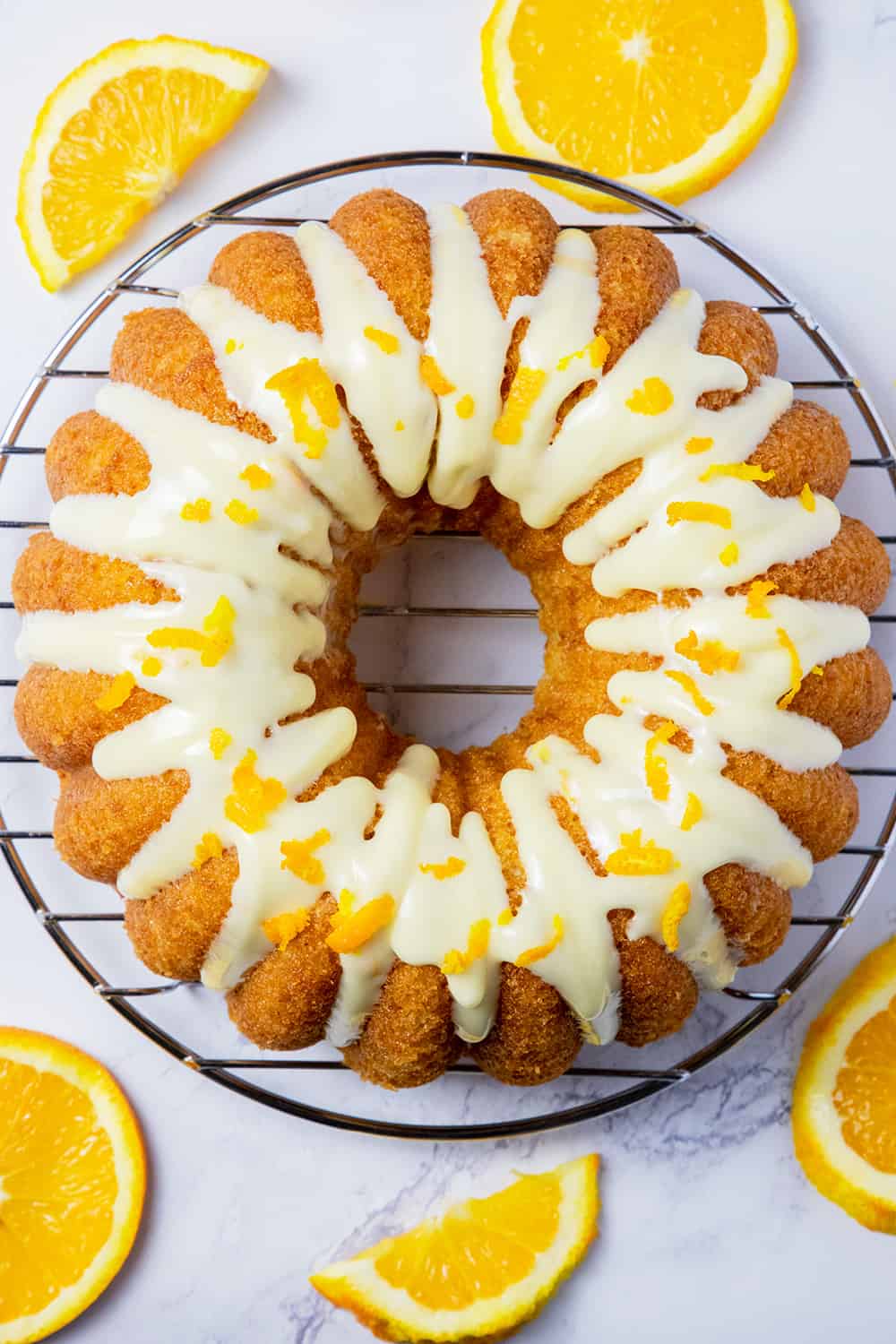
This bundt cake recipe is close to my heart. It was the very first recipe my mother taught me long before I became gluten-intolerant. Every spring, she would make about three orange bundt cakes and send them to her brothers and sisters. If you would ask our friends and family, they will tell you that nothing beats my mother's orange bundt cake.
The recipe for gluten-free orange bundt cake that I'm sharing with you today is an adaptation of my mum's recipe. I have altered many ingredients and changed the ratios to achieve the fluffy, light, and moist texture that bundt cakes are known for. Therefore, you would notice that to make this recipe gluten-free, I had to create my own gluten-free flour mix using white rice flour, tapioca flour, and brown rice flour.
What kind of Oranges to use?
Oranges are one of those fruits that you will find in your grocery store all year round. There are many types of oranges to choose from. For this recipe, you can select any of the following oranges. I personally mostly use navel oranges:
- Navel Oranges: this is what you will find all year round when you go to the grocery store. I used navel oranges for this recipe.
- Blood Oranges: my favorite and work really well in this recipe. However, they are seasonal and can be challenging to find + expensive.
- Valencia Oranges: They are usually sold during springtime. They contain more juice than navel oranges. Honestly, I sometimes can't tell the difference between them and Navel Oranges. I'm no orange expert.
Anyways, I found this cool video explaining the difference between navel oranges and valencia oranges for anyone interested.
Enough of oranges.
What Ingredients are needed?
To make this recipe, the following ingredients are needed to create an awesome orange bundt cake:
- White rice flour, Tapioca Flour, and Brown rice flour; We will be using all three to make the cake. The first time I made this cake, I used white rice flour and tapioca flour only, and the cake ended up being really rubbery. For the second trial, I reduced the amount of Tapioca flour and added brown rice flour. The texture was light, fluffy, and moist, exactly what I was looking for in a gluten-free cake.
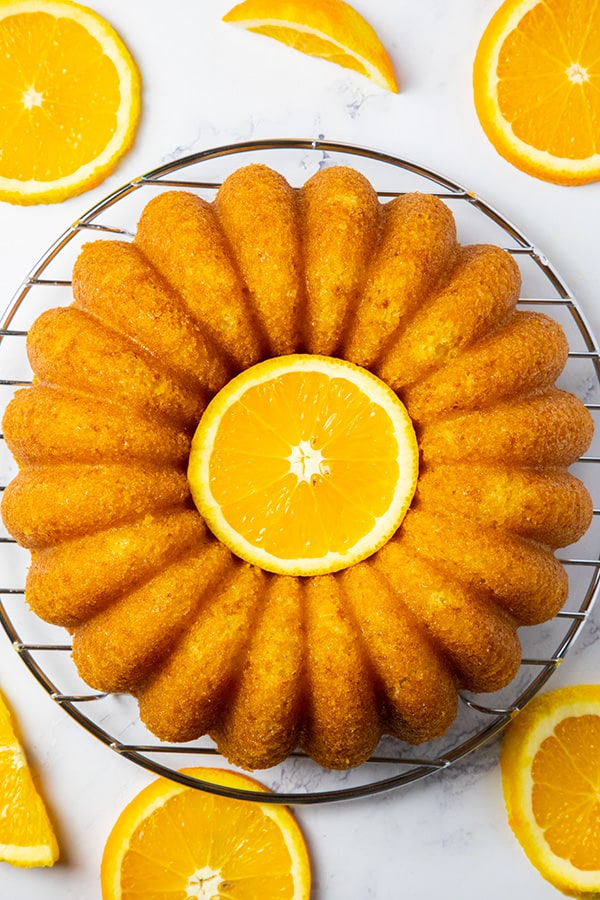
- Baking powder, baking soda, and eggs; to make the cake rise as much as possible but not too much.
- Xanthan gum; to prevent the ingredients from separating. Also, It helps provide the cake with structure.
- Butter; Our fat source for this recipe. I tried this recipe with vegetable oil, but it was too dry. I think that's because butter also has water, which provides moisture to the cake.
- Granulated Sugar; Our source of sweetness?
- Orange Zest, Lemon Zest, and Fresh Orange Juice; We will be using orange and lemon zest with fresh orange juice to pack this cake with as much flavor as we can.
- Buttermilk; my all-time favorite. Buttermilk is acidic and will help our bundt cake rise. It also provides a fluffy and light texture to the cake. You can substitute buttermilk with sour cream.
Bundt Cake Method
To make our bundt cake, we will start by first combining all the dry ingredients together.
Then in a stand-alone mixer with the paddle attachment or a hand-held mixer, we will beat the butter until it's fluffy to incorporate as much air as possible to it.
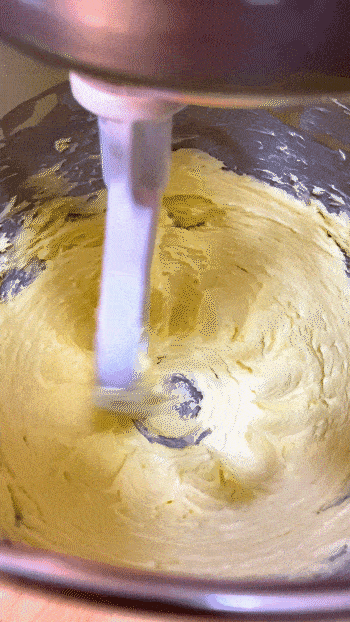
Then we will add the sugar and beat until fluffy.
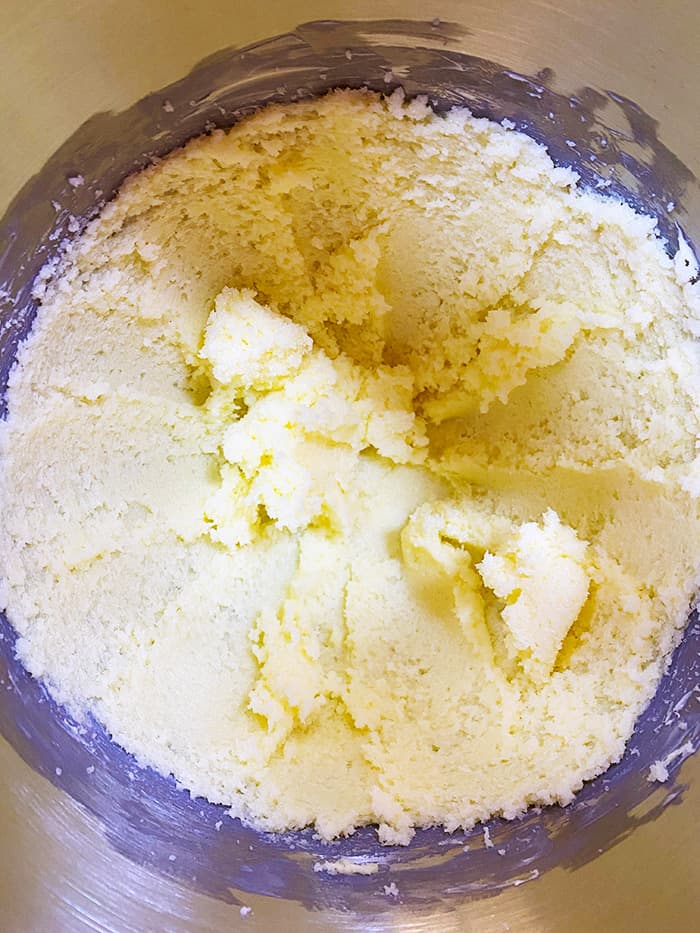
Afterward, we will add the eggs one at a time to prevent the mixture from curdling. Then we can add our vanilla extract, orange zest, lemon zest, and orange juice.
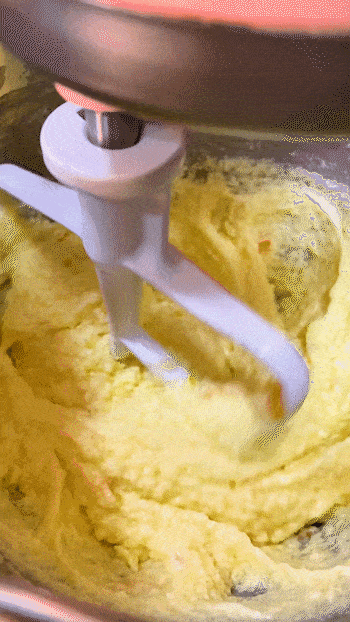
Next, we will add one-third of our dry ingredients to our wet ingredients, followed by half of the buttermilk. Once our first patch of dry ingredients is well incorporated, we can add another one-third of the dry ingredients, followed by the remaining buttermilk. We will finish off with the remaining flour mixture.
Once all the dry ingredients are added, mix the cake batter until the ingredients are well incorporated, making sure that you don't overmix the batter. If you overmix the cake batter, you risk losing all the air we weaved while beating the butter and sugar.
Orange Bundt Cake Glaze
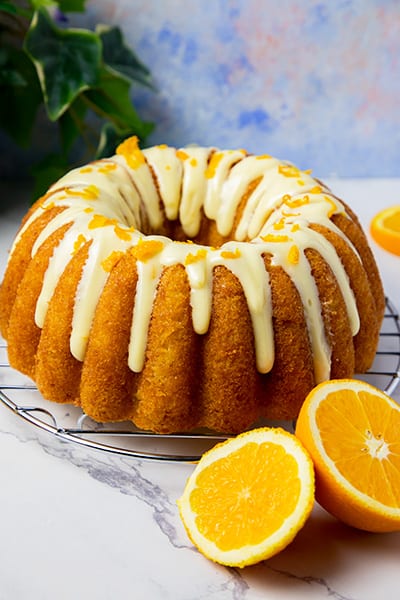
This orange bundt cake recipe tastes good without any glaze. However, if you want to take this recipe to the next level, then I definitely recommend adding the orange cream cheese frosting.
The orange cream cheese frosting is similar to the one used in the coconut cupcakes recipe, but we will be flavoring it with fresh orange.
To make the glaze, all you need is cream cheese, butter, vanilla extract, a pinch of orange zest, granulated sugar, and finally, fresh orange juice. We will start off by beating the cream cheese and butter together in a stand-alone mixer or handheld mixer until creamy and fluffy. Then we will add the vanilla extract, orange zest, granulated sugar, and orange juice and beat until we have a pourable consistency.
Other Gluten-Free Cake Recipes
Orange Bundt Cake - Gluten Free
Ingredients
Bundt Cake
- 162 grams of White Rice Flour
- 97 grams of Tapioca Flour
- 65 grams of Brown Rice Flour
- 1 ½ teaspoon of Baking Powder
- 1 teaspoon of Salt
- ½ teaspoon of Baking Soda
- 2 teaspoon of Xanthan Gum
- 226 grams of Unsalted Butter at Room Temperature
- 326 grams of Granulated Sugar
- 4 Large Eggs at Room Temperature
- 1 teaspoon of Vanilla Extract
- 2 tablespoon of Orange Zest
- 1 teaspoon of Lemon Zest
- 100 ml of Fresh Orange Juice
- 200 ml of Buttermilk
Orange Cream Cheese Frosting
- 70 grams of Full-Fat Cream Cheese at Room Temperature
- 28 grams of Unsalted Butter at Room Temperature
- 83 grams of Granulated Sugar
- ¼ teaspoon of Vanilla Extract
- A Pinch of Orange Zest
- 2 tablespoon of Fresh Orange Juice
Instructions
Bundt Cake
- Preheat the oven to 180 ℃ (356 ℉)
- In a stand-alone mixer with the paddle attachment or a hand-held mixer, beat the butter at medium-high speed until light and fluffy (3 minutes). Then add the sugar and beat until fluffy (3 minutes).
- Next, add the eggs one at a time and mix until combined. Then add the vanilla extract, orange zest, lemon zest, and fresh orange juice and beat until combined.
- In a separate bowl, mix the flours, baking powder, salt, baking soda, and xanthan gum using a whisk.
- Add one-third of the dry ingredients to the wet ingredients, followed by half the buttermilk, and mix at low speed. Keep adding your dry ingredients followed by buttermilk until your run out of dry ingredients. Making sure that you finish with the dry ingredients.
- Grease your bundt pan with butter and add your cake batter until the pan is ⅔ full.
- Place your bundt pan in the oven on the center rack and bake it for 30-33 minutes or until a toothpick inserted at the middle comes out clean.
Orange Cream Cheese Frosting
- Using a stand-alone mixer with the paddle attachment or a hand-held mixer, beat the butter and cream cheese at high speed until light and fluffy. Then add in the vanilla extract, orange zest, sugar, and orange juice and beat until you get a pourable consistency. If you feel that the frosting is too thick, keep adding orange juice until you have a consistency you like.
Notes
- When adding the dry ingredients to the wet ingredients, try not to overmix the batter.
- I open the oven door after 25 minutes to check if the cake is baked. Try not to open the oven door before the 25 minutes mark.
- I recommend using fresh orange juice for better taste.


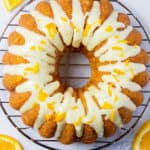
Leave a Reply